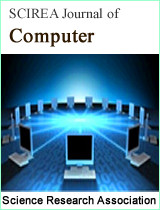Machine Learning Techniques for Opinion Mining from Social Media
DOI: 10.54647/computer52271 86 Downloads 13708 Views
Author(s)
Abstract
Expressing emotions through various channels is part of human life. Directly or indirectly, we somehow reflect our opinions through speech, writings, etc., in our daily life. Opinions containing emotional or sentimental words have huge impact in the society. Analyzing the emotions and sentiments of people has its own importance. For example, we can measure the well being of a society, prevent suicides, and measure the degree of satisfaction of their customers by analyzing the comments or the feedback. The world wide web sites like social media, forums, review sites, and blogs generate a large volume of data in the form of opinion, emotion, and sentiment about social events, government policies, political events etc. Increased use of technology has made people proactively express their opinion through social media sites like Twitter, Facebook, and Instagram. Decision makers can make use of social media content to understand how people react to policies, events, and consumer products. But, social media analytics is a complex task due to the challenges in the natural language processing of social media language. These messages do not adhere to grammatical standards. The unstructured data from the social media needs to be cleansed and well-structured for opinion mining. These messages often reflect the opinion, emotion, and sentiment of the public through a mixture of text, emoticons, image, etc. Standard natural language processing tools cannot be used to analyze the emotion or sentiment hidden in the social media content. Social media users use emoticons like smiling face (), angry face () etc., to express emotion instead of words. They also express positive () or negative () sentiment using emoticons. These statements are called electronic Word of Mouth (eWOM) and are much popular in business and service industry to enable customers to express their point of view. We propose to use a two-step approach for opinion mining of social media content. Instead of using language parsers for parsing the eWOM, we propose to use machine learning algorithm for opinion mining.
Keywords
Emotion Analysis, Sentiment Analysis, Opinion Mining, Social Media Analytics.
Cite this paper
K. Victor Rajan, Freddy Frejus,
Machine Learning Techniques for Opinion Mining from Social Media
, SCIREA Journal of Computer.
Volume 7, Issue 1, February 2022 | PP. 10-29.
10.54647/computer52271
References
| [ 1 ] | Cecilia Ovesdotter Alm, Dan Roth, and Richard Sproat. Emotions from text: machine learning for text-based emotion prediction. Proc. Conf.Human Language Technology and Empirical Methods in Natural Language Processing, pages 579–586, 2005. |
| [ 2 ] | Neviarouskaya, A., Prendinger, H ., Ishizuka, M. Analysis of affect expressed through the evolving language of online communication. In Proc. of the 12th Int’l Conf. on Intelligent user interfaces. January 2007. Pages 278–281 |
| [ 3 ] | Bradley, M. M, Greenwald, M. K. Petry, M.C. Lang, P. J. Remembering pictures: Pleasure and arousal in memory. Journal of Experimental Psychology: Learning, Memory, & Cognition. Vol. 18: 379–390, 1992. |
| [ 4 ] | R. Plutchik. Emotion: Theory, Research and Experience. In Theories of emotion, volume 11, page 399. Academic Press, 1980. |
| [ 5 ] | R C Balabantaray, Mudasir Mohammad, and Nibha Sharma. Multi-Class Twitter Emotion Classification: A New Approach. International Journal of Applied Information Systems (IJAIS), 4(1):48–53,(2012). |
| [ 6 ] | W Wang, L Chen, K Thirunaraya, AP Sheth: Harnessing twitter big data for automatic emotion identification: IEEE (2012). |
| [ 7 ] | G Sanjiv R. Das, Mike Y. Chen, (2007) Yahoo! for Amazon: Sentiment Extraction from Small Talk on the Web. Management Science 53(9):1375-1388. |
| [ 8 ] | Walaa Medhat, Ahmed Hassan, Hoda Korashy. Sentiment analysis algorithms and applications: A survey. Ain Shams Engineering Journal (2014) 5, 1093-1113. |
| [ 9 ] | Fan Teng-Kai, Chang Chia-Hui. Blogger-centric contextual advertising. Expert Systems with Applications 2011;38:1777-88. |
| [ 10 ] | Michael Hagenau, Michael Liebmann, Dirk Neumann. Automated news reading: Stock price prediction based on financial news using context-capturing features. Decision Support Systems; 2013. |
| [ 11 ] | Duric Adnan, Song Fei. Feature selection for sentiment analysis based on content and syntax models. Decision Support Systems; 2012;53:704-11. |
| [ 12 ] | Kaufmann JM. JMaxAlign: A Maximum Entropy Parallel Sentiment Analysis Tool. In proceedings of COLING’12; Demonstration papers, Mumbai 2012. Pages 277-88. |
| [ 13 ] | Chin Chen Chien, Tseng You-De. Quality evaluation of product reviews using an information quality framework. Decision Support Systems 2011;50:755-68 |
| [ 14 ] | Gagniuc, Paul A. (2017). Markov Chains: From Theory to Implementation and Experimentation. USA, NJ: John Wiley & Sons. pp. 2–8.ISBN 978-1-111-38755-8 |
| [ 15 ] | S. Phuvipadawat and T. Murata. Breaking news detection and tracking in twitter. In WI-IAT, pages 120–123, 2010. |
| [ 16 ] | Gabriel Pui Cheong Fung, Jeffrey Xu Yu, Philip S. Yu, Hongjun Lu. Parameter Free Bursty Events Detection in Text Streams. Proceedings of the 31st VLDB Conference, Trondheim, Norway, 2005 |
| [ 17 ] | Y. Yang, J. Carbonell, R. Brown, T. Pierce, B. T. Archibald and X. Liu. Learning approaches for detecting and tracking news events. IEEE Intelligent Systems, 14 (4):32–43, 1999. |
| [ 18 ] | G. K. Zipf. Human Behavior and the Principle of Least Effort: An Introduction to Human Ecology. Hafner Pub. Co, 1949. |
| [ 19 ] | J. Weng and B.-S. Lee. Event detection in twitter. In ICWSM, pages 401–408, 2011. |
| [ 20 ] | M. Mathioudakis and N. Koudas. Twitter monitor: trend detection over the twitter stream. In SIGMOD, pages 1155–1158, 2010 |
| [ 21 ] | Alimehmeti, I. (2021). Efficacy and Safety of AZD1222, BNT162b2 and mRNA-1273 vaccines against SARS-CoV-2. Albanian Journal of Trauma And Emergency Surgery, 5(1), 791-796. doi: 10.32391/ajtes.v5i1.178 |

